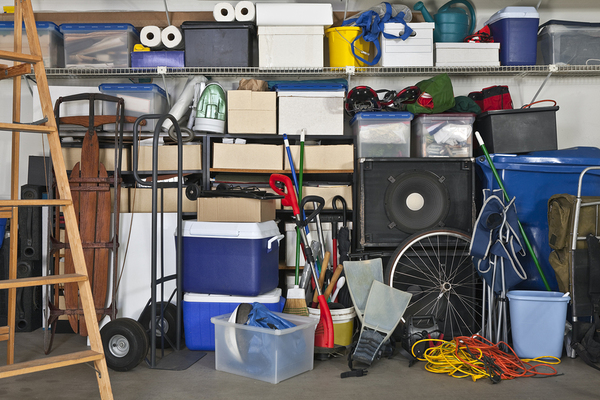
Outbuildings might be cute little sheds or oversize workshops, but they’re not part of a general home inspection.
Home inspectors inspect what’s visible and accessible inside and outside the home. That’s what essentially every Standards of Practice say. So why doesn’t it include outbuildings?
Sheds, outbuildings, and other detached structures are certainly part of the property, and your insurance company might even include them. But as for home inspections, they fall into a category. Unless the local regulations state otherwise, you may inspect them or disclaim them, as you like.

If it looks like this, it’s probably a garage.
Garages are the Determining Factor
Not every detached building on the property gets a pass. Garages are included in inspections. According to ASHI‘s Standards of Practice, section 4.2, E “The inspector is not required to inspect outbuildings other than garages and carports.”
So that’s the primary difference. If an outbuilding is classified as a garage, it’s part of a complete home inspection, even if it’s a detached building. If it’s not a garage, you’re not required to inspect it.
There isn’t a lot of formal, published reasoning about why outbuildings don’t make the cut. Perhaps it’s because they often don’t have electricity or plumbing. And perhaps it’s because they’re not a structure that the residents will visit often.
To Inspect an Outbuilding or Not
Some home inspectors provide outbuilding inspection as an ancillary service and some include it in the home inspection even though it’s not required. That’s entirely up to you and the location where you work. If local regulations require an inspection of every building on the property, then you should follow those rules and include in the home inspection. It’s unlikely, but it’s possible.
If not, then it’s your choice. If you do inspect outbuildings, you’ll need to devise standards of your own or modify existing standards to suit the structure. For example, if the outbuilding has a shingled roof, you would inspect the roofing materials and also check inside for leaks. If there’s electric service inside the building, that should also be inspected if you go that route.
The presence of electric service in the building might be a determining factor for you. That’s especially true if its service comes from a subpanel off the main load center. But again, it’s not required. If you offer outbuilding inspections as a separate service, you’ll want to discuss the particulars with your customers.
The more finished the outbuilding, the more you may be inclined to either include it or offer a separate inspection for it. But be aware that additional items might also put you at additional risk. Check with your insurance provider to be sure. Other great resources are peers in your local association chapter. If the majority of them inspect outbuildings, they’ll be a wealth of knowledge about how they approach it. And if most of them avoid the detached structures, you might decide to skip them, too.
Home inspections cover so many things that it’s sometimes surprising to learn about what’s not included. Even inside the home, you’re not required to inspect every square inch. As for outbuildings, it’s really up to you. ASHI’s Standards of Practice are very clear on the subject. But that doesn’t mean you’re prohibited from taking on the extra duty.
Are you ready to begin your career as a certified home inspector? This is right where you need to be. Enroll now in our self-paced program and you could earn your certification in as little as a few weeks.







